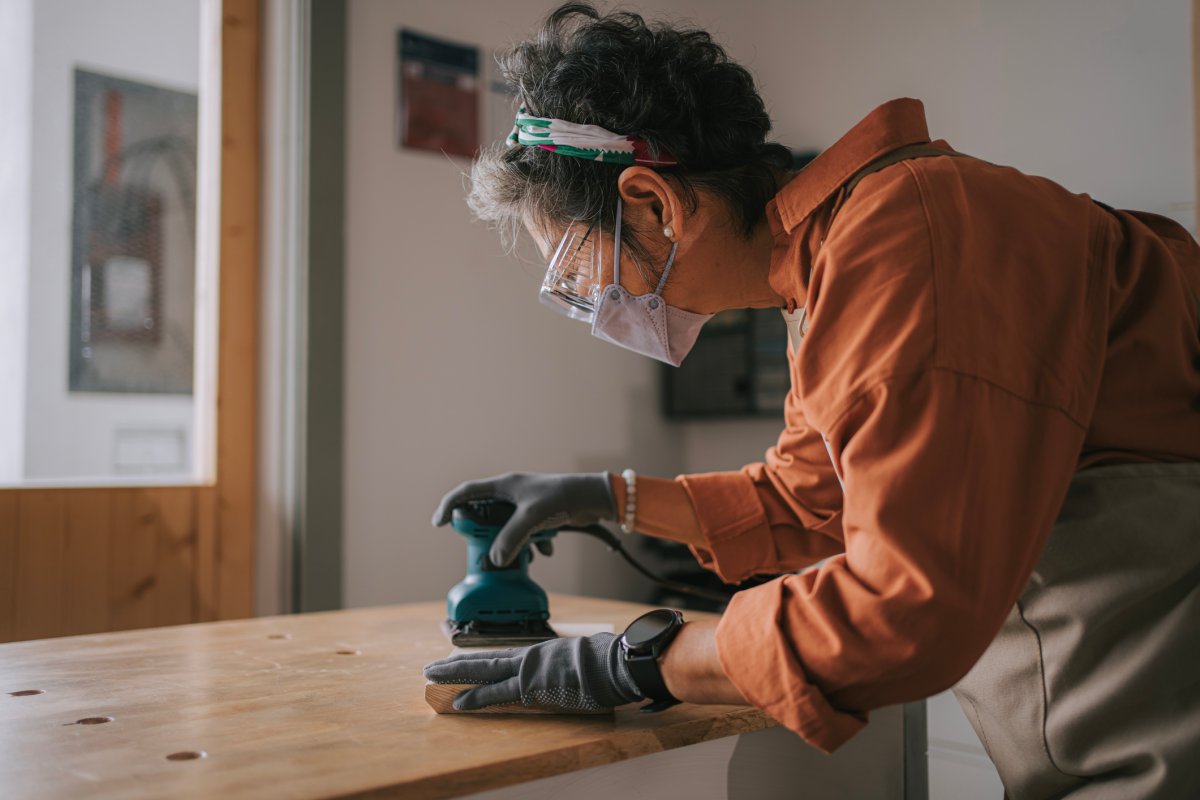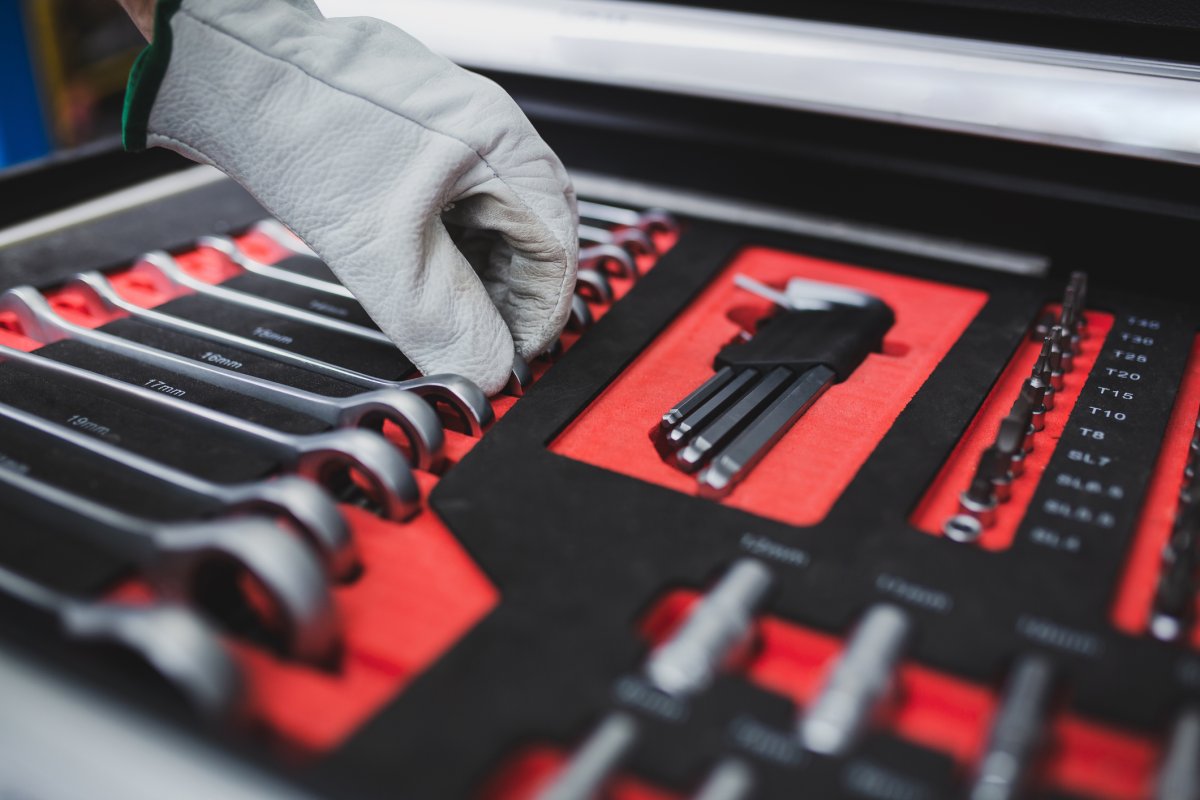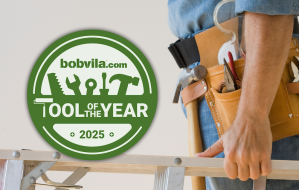

We may earn revenue from the products available on this page and participate in affiliate programs. Learn More ›
If you enjoy tackling DIY home projects armed with your collection of tools, you might be in for a few surprises and setbacks if it turns out you are making some common mistakes in their use and maintenance. Even the most well-intentioned DIYers can turn simple tasks into costly disasters.
Whether using the wrong tool for the job or neglecting basic safety protocols, these missteps can compromise the quality of the finished project and lead to injury, property damage, and unnecessary expenses that could have been prevented. We spoke to several pros to identify the most common tool mistakes and how you can avoid them.
1. Not Wearing Personal Protective Equipment (PPE)
When working with power tools such as saws, drills, nail guns, and impact wrenches, it’s important to always remember to wear the proper PPE, says Darian Leyva, handyperson expert at American Home Shield. This includes safety glasses, sturdy gloves, nonslip shoes, ear protection, dust masks, long-sleeve shirts, pants, and closed-toe shoes. “Not wearing the proper PPE when working with power tools can become extremely dangerous and cause serious harm to yourself and others,” says Leyva.
It’s common for people to forgo wearing safety equipment because they think the job will be quick and easy. Yet, it’s imperative to take a few seconds to don PPE before starting a project to ensure you use power tools safely.

2. Choosing the Wrong Tool for the Job
DIYers often pick up the wrong tool for the task at hand, potentially damaging materials and the tools, and possibly ruining the project altogether. Examples include cutting wood with a hacksaw, using a screwdriver when you need a wrench, or using a flathead screwdriver as a chisel. “It is not what they were designed for and can be unnecessarily dangerous, ineffective, or overly time consuming,” says Erika Woodhouse, senior manager of marketing and communications at MBA Builders in Wakefield, Massachusetts. She recommends taking classes or watching YouTube videos to learn how to use tools properly for the projects you plan to tackle.
3. Not Cleaning Tools
Another mistake is improperly cleaning tools or forgetting to clean them altogether. This is an important step to protect the lifespan of your tools, says Steve Corcoran, CEO of Lawn Love in San Diego, California. “If you don’t clean your tools as you should, you can encounter issues like rust, which can force you to have to replace your tools sooner than necessary,” he says.
Failure to clean tools also can cause the tools to become less effective over time. “When they are less effective, they can even become more dangerous to use, or they can be more likely to damage the materials or items they are used on,” warns Corcoran. If you never sanitize your pruning shears, for example, you could end up spreading harmful bacteria that kills plants. It’s recommended to clean tools after each use. Be sure to wipe down all tools after using them, especially the cutting edges.
“A tangled pile of tools in a damp basement isn’t a collection; it’s a rust farm.”
Davit Jabakhidze, Home Alliance

4. Ignoring Maintenance
Neglecting maintenance is another of the common tool mistakes. “DIYers often just make do until the tools fail, which usually happens mid-project,” notes Davit Jabakhidze, electrical account manager at Home Alliance. “Tools wear out whether you notice or not; blades dull, bits chip, cords fray.” Refer to the instructions provided by the manufacturer to keep up with proper maintenance for your tool collection. It’s worth putting in the time now to avoid spending more money in the future on new tools.
5. Not Storing Tools in a Safe and Organized Way
Another mistake people make is not storing tools properly. “A tangled pile of tools in a damp basement isn’t a collection; it’s a rust farm,” says Jabakhidze. “Tools stored incorrectly get dull, corroded, or just plain lost.” They can also get damaged or become a safety hazard. Watch out for tangled cords that people can trip on. After a project, put your tools away in a dry, airtight toolbox or container. Stay organized by labeling trays and compartments with the exact tool name.

6. Using an Improper Grip or Stance
Your stance and grip are your first line of defense when working with tools. Therefore, if you are using an improper stance or grip, you can lose control of a tool and increase the chance of it twisting, slipping, or kicking back unexpectedly, warns Leyva. “This also increases the chance of the tool spinning out of your hands and out of your control.” Leyva recommends fixing this issue by keeping your feet shoulder-width apart, slightly bending your knees, centering your body weight, using a two-hand grip, and keeping your elbows close to your body for leverage. “Always position yourself so if the tool slips or kicks back, it moves away from you and not towards your body.”
7. Not Adjusting Torque
DIYers often misuse power tools, says Jabakhidze. Forgetting to adjust for torque can ruin a home project by stripping screws, splitting wood, or driving a nail in too deep, for example. “Cordless drills are used like screwdrivers until they strip out everything in sight. I’ve also seen circular saws run without proper support, binding the blade and kicking back hard enough to scare anyone straight.” He suggests that people learn their tools’ limits. “Use low torque for screws, high torque for drilling, and always support both sides of a cut to let the saw do the work without forcing it,” he says.
